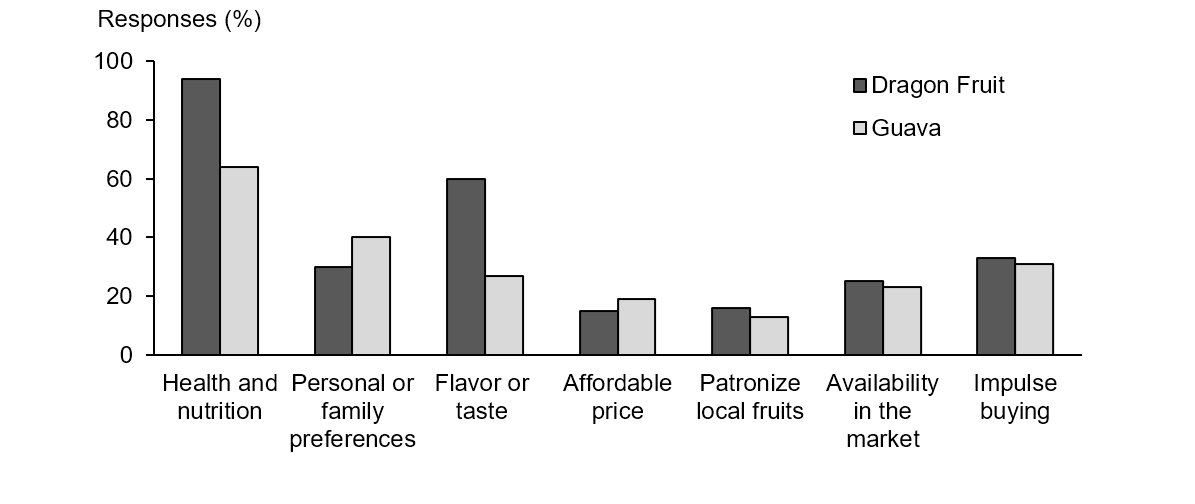VOLUME 13 NUMBER 2 (July to December 2020)

Philipp. Sci. Lett. 2020 13 (2) 101-112
available online: August 31, 2020
*Corresponding author
Email Address: aagerance@up.edu.ph
Date received: February 21, 2020
Date revised: June 12, 2020
Date accepted: August 12, 2020
ARTICLE
Determinants of Consumer Purchase Decision for Dragon Fruit and Guava and Implications for Value Chain Improvement
Arjay A. Gerance*1, Dormita R. del Carmen1, and Elda B. Esguerra1,2
1Postharvest Horticulture Training and Research Center
(PHTRC), College of Agriculture and Food Science (CAFS),
University of the Philippines Los Baños (UPLB),
College, Laguna 4031
2Institute of Crop Science (ICropS), CAFS, UPLB, College,
Laguna 4031
(PHTRC), College of Agriculture and Food Science (CAFS),
University of the Philippines Los Baños (UPLB),
College, Laguna 4031
2Institute of Crop Science (ICropS), CAFS, UPLB, College,
Laguna 4031
Growing attention has been paid to the consumption of dragon fruit (Hylocereus spp.) and guava (Psidium guajava L. ‘Queso de Bola’), which are among the emerging fruits that have large economic potentials due to increasing popularity and demand. This study provided an understanding of the factors influencing consumer purchase decision from 200 respondents as affected by preferences and demographic characteristics. Results showed that Filipino urban consumers still put greater value on intrinsic attributes including freshness, peel color, overall peel quality, and taste. Strong correlations to household conditions implied that as income increases and/or household size becomes bigger, consumers were more active in purchase decision processes. Consumer segments identified health-conscious and convenience-inclined groups as less sensitive to price changes whereas aesthetic-conscious/price-sensitive groups paid more attention to visual quality attributes while being price-conscious. However, purchase disappointments signaled a possible mismatch in production and consumption thus improvements along the value chain starting from production, postharvest handling, and marketing, as well as concomitant priority research areas, can be made to capture consumer preferences. Consequently, this would translate to increased market demand from satisfied consumers, reduced losses, and chain efficiency that could propel the development of the emerging fruit industries.
© 2024 SciEnggJ
Philippine-American Academy of Science and Engineering